Complete Solutions to B More than One Option is Correct of chapter WORK, POWER AND ENERGY of Class 11 book with complete answers and questions
| Class 11 | PHYSICS |
| Chapter | WORK, POWER AND ENERGY |
| DC PANDEY MASTER PROBLEM PACKAGE | B More than One Option is Correct |
| Number Of Questions | 26 |
| Academic Year | 2023-24 |
If the kinetic energy of a body is directly proportional to time t, the magnitude of the force acting on the body is
View SolutionSelect the correct alternative(s).
View SolutionWork done by a force on an object is zero, if
View SolutionA block of mass 2 kg is hanging over a smooth and light pulley through a light string. The other end of the string is pulled by a constant force F = 40 N. The kinetic energy of the particle increases 40 J in a given interval of time. Then, `(g = 10 m//s^(2))`
View SolutionA particle moves in a straight line with constant acceleration under a constant force F. Select the correct alternative(s).
View SolutionOne end of a light spring of spring constant k is fixed to a wall and the other end is tied to a block placed on a smooth horizontal surface. In a displacement, the work done by the spring is `+(1/2)kx^(2)`. The possible cases are.
View SolutionA block is suspended by an ideal spring of force constant force F and if maximum displacement of block from its initial mean position of rest is `x_(0)` then
View SolutionThe potential energy `U` in joule of a particle of mass `1 kg` moving in `x-y` plane obeys the law`U = 3x + 4y`, where `(x,y)` are the co-ordinates of the particle in metre. If the particle is at rest at `(6,4)` at time `t = 0` then :
View SolutionIn a projectile motion, power of the gravitational force
View SolutionDisplacement time graph of a particle moving in a straight line is as shown in figure. Select the correct alternative (s) :
 .
.
View SolutionA smooth track in the form of a quarter circle of radius `6 m` lies in the vertical plane. A particle moves from `P_(1)` to `P_(2)` under the action of forces `vec F_(1),vecF_(2)` and `vec F_(3)` Force `vec F_(1)` is always `30 N` in magnitude. Force `vec F_(3)` always acts tangentiallly to the track and is of magnitude `15 N`. Select the correct alternative (s) :
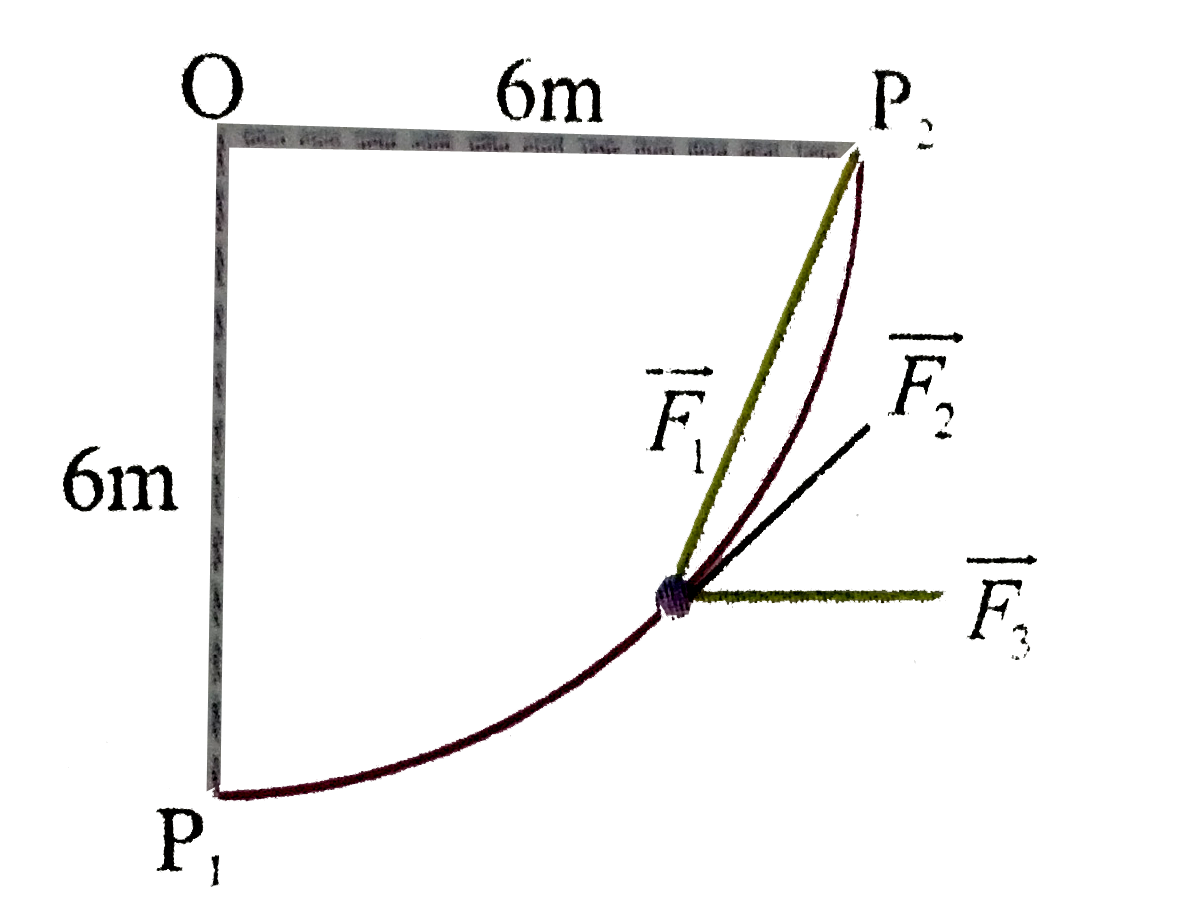 .
.
View SolutionA particle is acted upon by only a conservative force `F=(7hat(i)-6hat(j))` N (no other force is acting on the particle). Under the influence of this force particle moves from (0, 0) to (-3m, 4m) then
View SolutionA block of mass `M_(1)` is attached with a spring constant `k`. The whole arrangement is placed on a vechile as shown in the figure. If the vehicle starts moving towards right with an acceleration a (there is no friction anywhere), then :
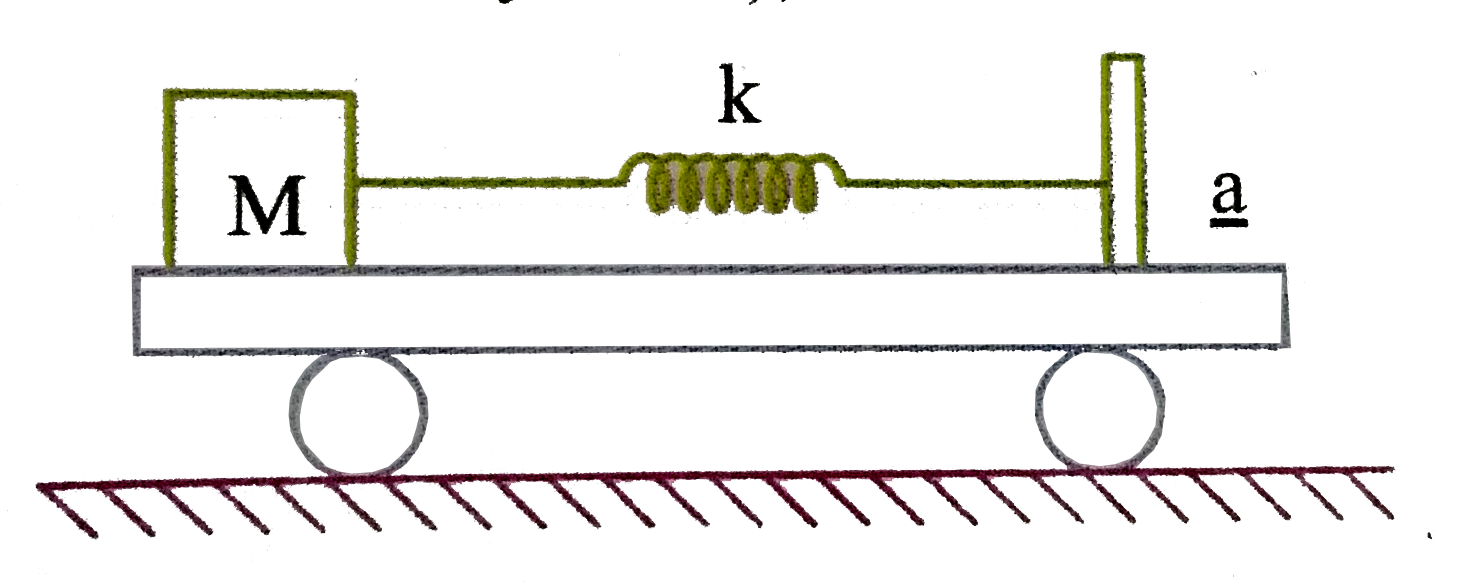 .
.
View SolutionTwo blocks A and B having different kinetic energies `K_(A)` and `K_(B)(gt K_(A))` are released on rough horizontal ground. Coefficient of friction for both of them is same. Then
View SolutionA force `F = - kx^(3)` is acting on a block moving along x-axis. Here, k is a positive constant. Work done by this force is
View SolutionPower of a force acting on a block varies with time t as shown in figure. Then, angle between force acting on the block and its velocity is

View SolutionDisplacement time graph of a particle moving in a straight line is as shown in figure.
From the graph we can conclude that work done on the block is :
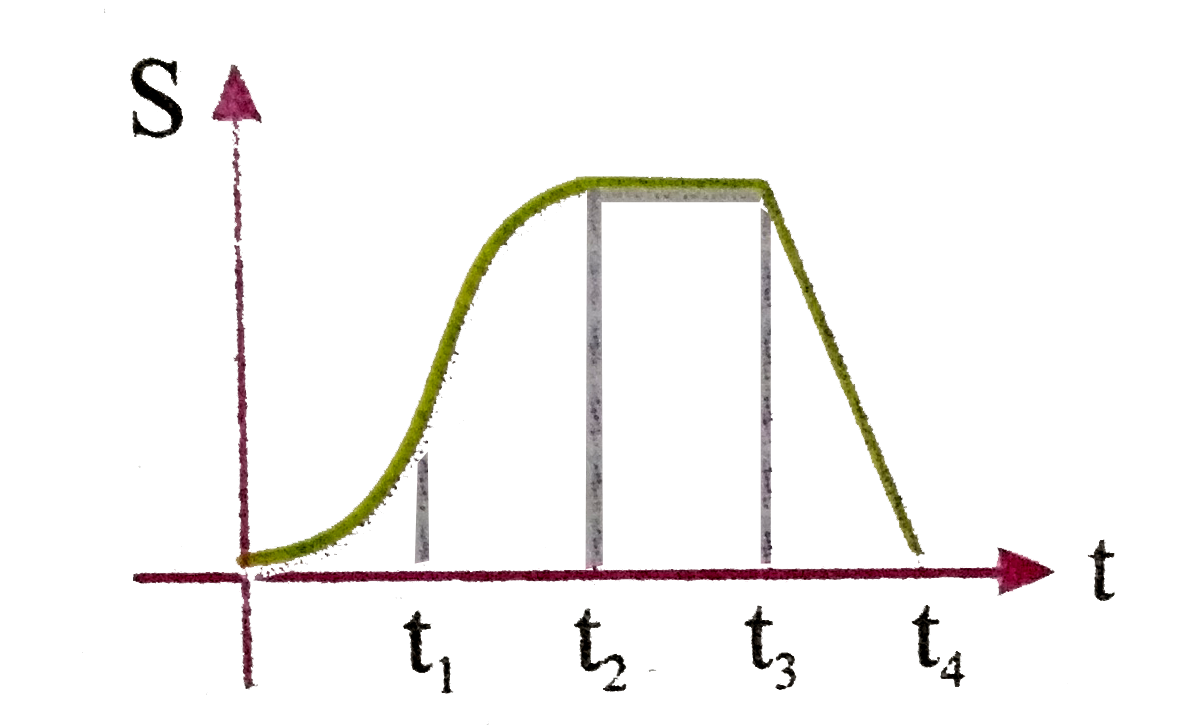 .
.
View SolutionIn the pulley-block system shown in figure, strings are light. Pulleys are massless and smooth. System is released from rest. In `0.3` seconds.
 .
.
View SolutionA particle is acted upon by a force of constant magnitude which is always perpendiculr to the velocity of the particle. The motion of the particle takes place in a plane. It follows that
View SolutionA block slides down a smooth inclined plane and then moves on to a rough horizontal surface. Which of the following is/are correct? (Neglect impulsive effect at the bottom of incline)
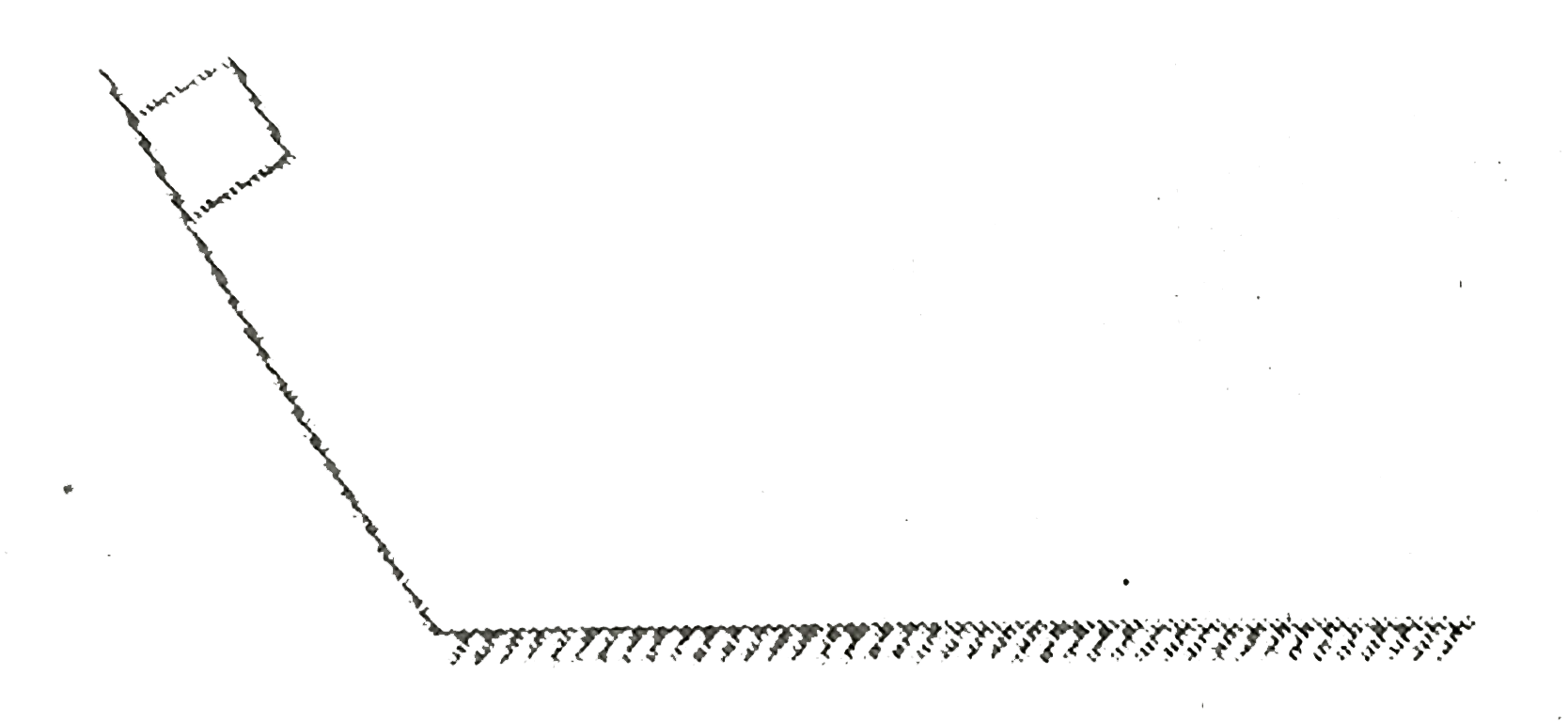
View SolutionA block of mass m is pulled by a force of constant power P placed on a rough horizontal plane. The friction coefficient between the block and the surface is `mu`. Then
View SolutionA force of constant magnitude `F_(0)` is applied in the tangential direction as shown in the figure. Assume that the bob is at its lowest point initially.

View SolutionA bead slides on a fixed frictionless wire bent into a horizontal semicircle of radius `R_(0)` as shown in figure. In addition to any normal forces exerted by the wire, the bead is subjected to an external force that points directly away from origin and depends on distance r from the origin according to the formula `F=F_(0)((r )/(R_(0)))^(2)hat(r)`

View SolutionA block of mass m is placed on a circular track and then it is given a velocity `upsilon` vertically downwards at position A on track. If block moves on track with constant speed, then

View SolutionIn the system as shown in figure, the blocks have masses `m_(1)` and `m_(2)`, the spring constant is k, coefficient of friction between the block of mass `m_(1)` and the surface is `mu`. The system is released with zero initial speed from the position where the spring is in its natural length.
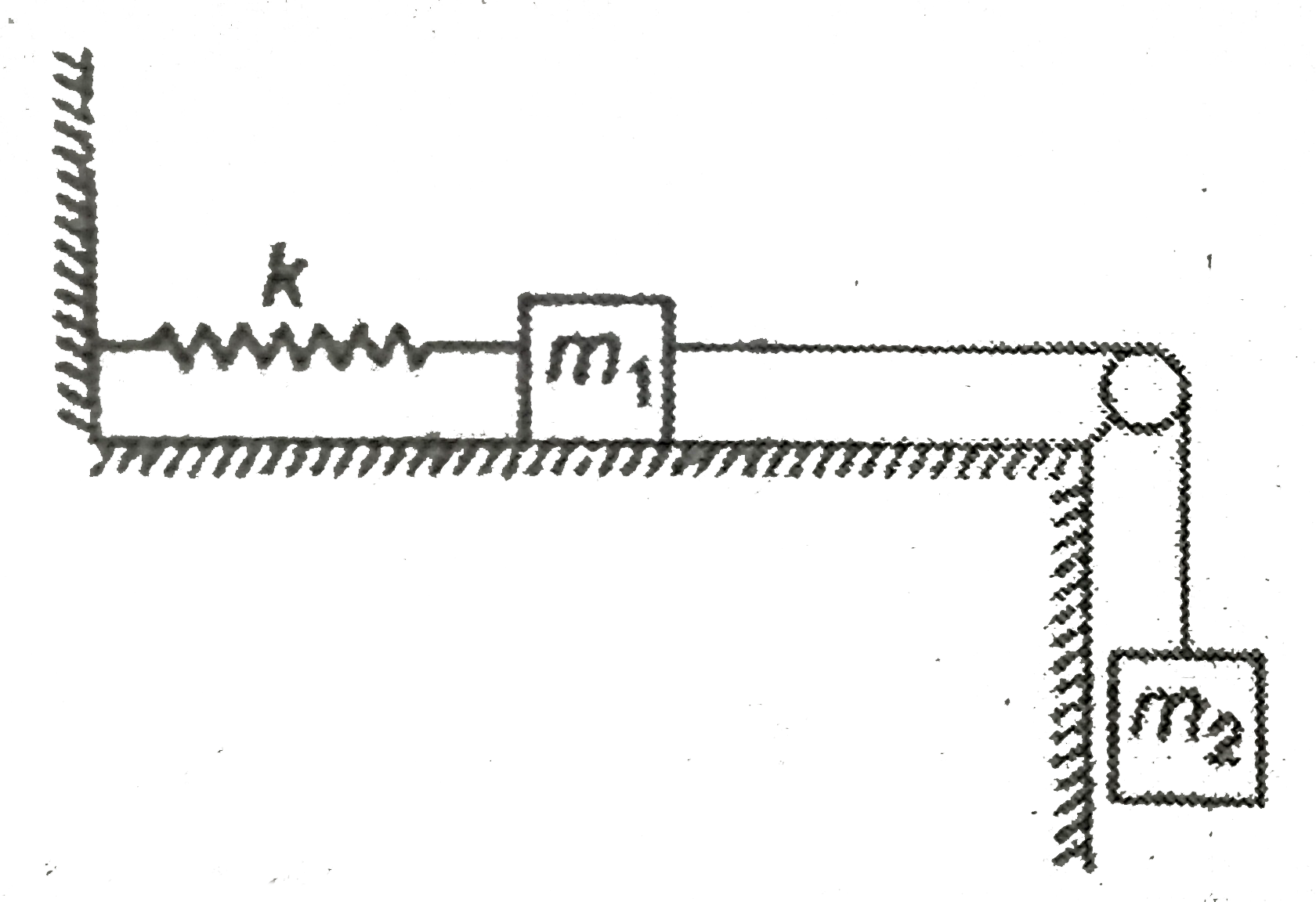
View SolutionInstentenous power delivered by engine of a car of mass 18 kg moving on +x-axis is given as `p=(2x+5)` watt, where x is (in meter) position of car. Car starts from origin from rest (choose the correct statement(s).
View Solution
B More than One Option is Correct questions and complete solutions for chapter WORK, POWER AND ENERGY of DC PANDEY ENGLISH of Class 11